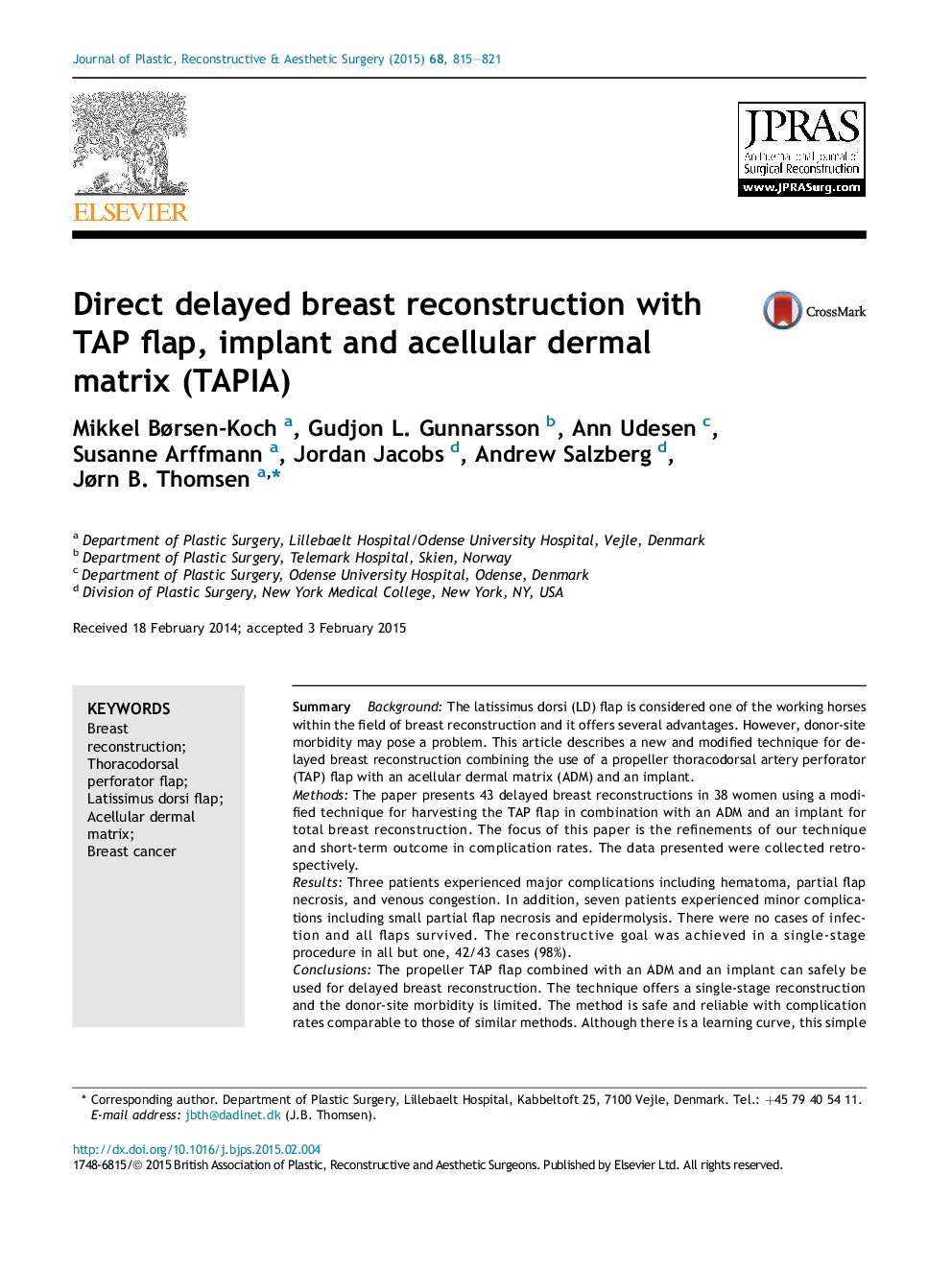| Article ID | Journal | Published Year | Pages | File Type |
|---|---|---|---|---|
| 6214485 | Journal of Plastic, Reconstructive & Aesthetic Surgery | 2015 | 7 Pages |
SummaryBackgroundThe latissimus dorsi (LD) flap is considered one of the working horses within the field of breast reconstruction and it offers several advantages. However, donor-site morbidity may pose a problem. This article describes a new and modified technique for delayed breast reconstruction combining the use of a propeller thoracodorsal artery perforator (TAP) flap with an acellular dermal matrix (ADM) and an implant.MethodsThe paper presents 43 delayed breast reconstructions in 38 women using a modified technique for harvesting the TAP flap in combination with an ADM and an implant for total breast reconstruction. The focus of this paper is the refinements of our technique and short-term outcome in complication rates. The data presented were collected retrospectively.ResultsThree patients experienced major complications including hematoma, partial flap necrosis, and venous congestion. In addition, seven patients experienced minor complications including small partial flap necrosis and epidermolysis. There were no cases of infection and all flaps survived. The reconstructive goal was achieved in a single-stage procedure in all but one, 42/43 cases (98%).ConclusionsThe propeller TAP flap combined with an ADM and an implant can safely be used for delayed breast reconstruction. The technique offers a single-stage reconstruction and the donor-site morbidity is limited. The method is safe and reliable with complication rates comparable to those of similar methods. Although there is a learning curve, this simple modified technique does not demand any perforator or other vessel dissection. Any trained plastic surgeon should be able to adopt the technique into the growing armamentarium of breast reconstruction possibilities.
